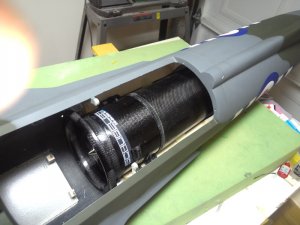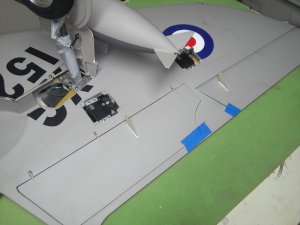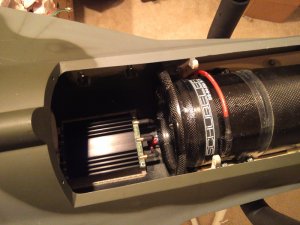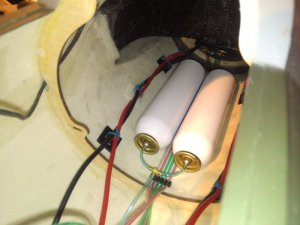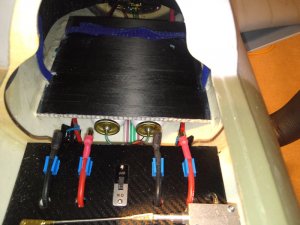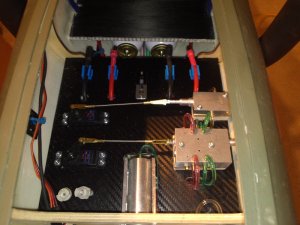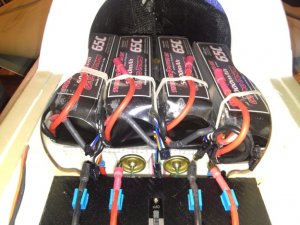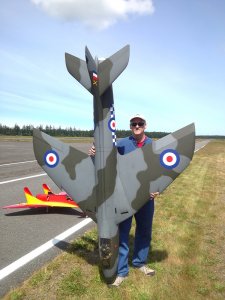I have the DS-94 HST 6745-700 that I was planning on using in the large BVM F-86 that I'm building but upon further inspection of the intake and exhaust openings, I found the exhaust opening on the F-86 so I ordered a DS-77 6745-700 HST for the F-86. I was looking for an airframe to put the DS-94 in when Ripmax released the 1/6th scale Hawker Hunter. I ordered one and it arrived a couple of weeks ago. I've been converting it as time permits. Here's what I've done so far:
The first thing I did was remove and clean the main gear. They were covered in something gritty but I'm not sure if it was sand or what it was. I'm using Futaba S9072SB servos on all surfaces except the elevators which will be JR DS3421. The aileron and flap servos were programmed and a sbus cable was run into each wing. The servos were plugged in to the sbus cable and they were tested for proper operation. The servo mounting tabs needed a small bit of adjustment in order to get the servo arm to line up with the control horn slots in the ailerons and flaps. I used a small straight edge to accomplish this. Lastly, the pylons were attached to the wings.
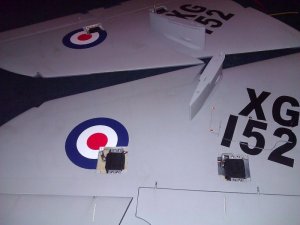
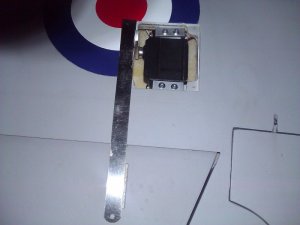
The first thing I did was remove and clean the main gear. They were covered in something gritty but I'm not sure if it was sand or what it was. I'm using Futaba S9072SB servos on all surfaces except the elevators which will be JR DS3421. The aileron and flap servos were programmed and a sbus cable was run into each wing. The servos were plugged in to the sbus cable and they were tested for proper operation. The servo mounting tabs needed a small bit of adjustment in order to get the servo arm to line up with the control horn slots in the ailerons and flaps. I used a small straight edge to accomplish this. Lastly, the pylons were attached to the wings.




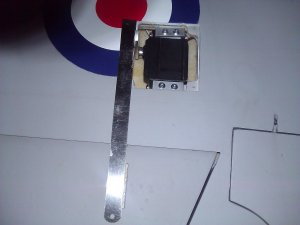
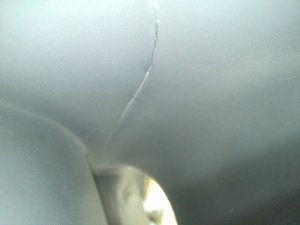
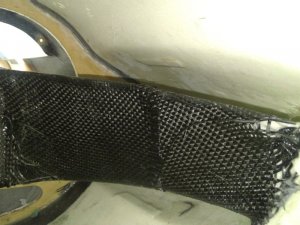
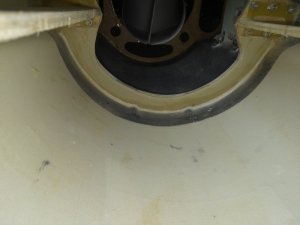

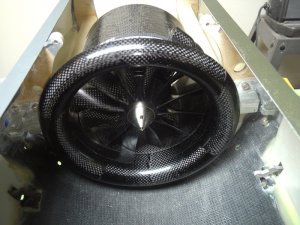
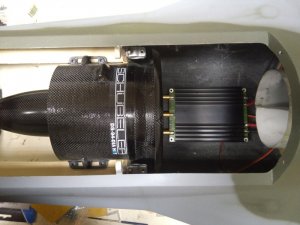
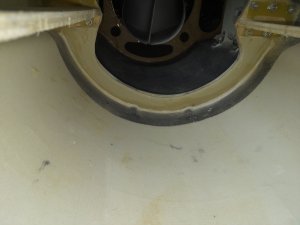
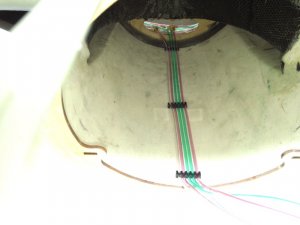
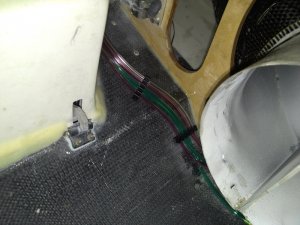
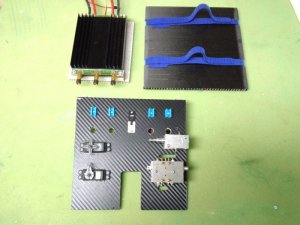
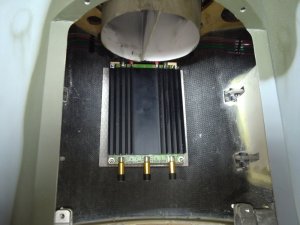
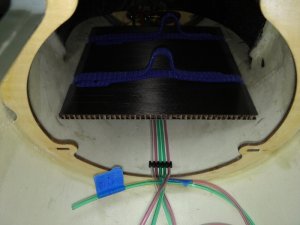

 I also hysoled all of the control horns in place.
I also hysoled all of the control horns in place.
